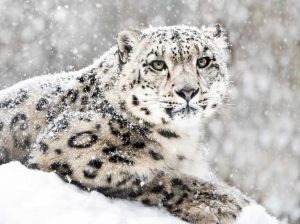Leopard Extinction:

The leopard (Panthera pardus) faces an 83% increased risk of extinction in North India due to roadkill, according to a new international study that quantifies the threat posed by roads to the survival of animal populations around the world.
- The leopard population of North India is at highest risk among four animal populations identified as being the most vulnerable to extinction in the next 50 years if observed roadkill levels persist.
- It is followed by the maned wolf and the little spotted cat, both of Brazil, and the brown hyena of southern Africa.
- At an 83% increased risk, the study estimates the time to the North Indian leopard population’s extinction at 33 years.
- Other populations found highly vulnerable include the lion-tailed macaque (Macaca silenus) and sloth bear (Melursus ursinus) in South India.
- For the North Indian leopard population, the study site covered Uttarakhand’s Rajaji National Park and Haridwar Conservation area.
- The International Union for Conservation of Nature (IUCN) recognises roadkill as a threat to 10 mammalian species, but the study notes that these were not among those found most vulnerable by the researchers.




